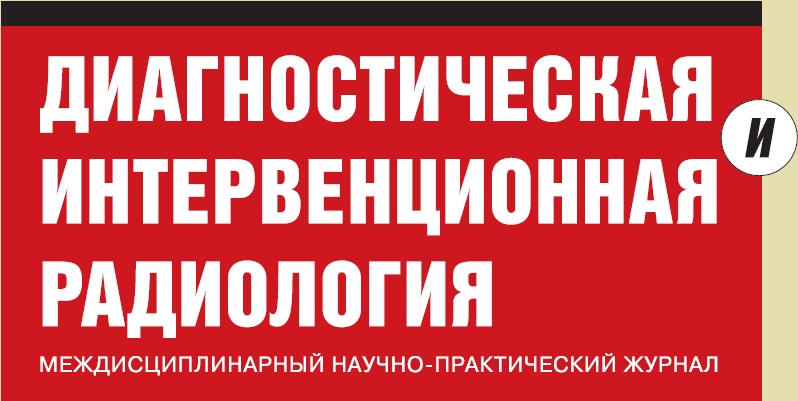|
авторы:
|
ключевые слова:
|
Аннотация: ГБУ «Новосибирский научно-исследовательский институт патологии кровообращения имени академика Е.Н. Мешалкина» Минздравсоцразвития России, Новосибирск, Россия 630055, Россия, г. Новосибирск, ул. Речкуновская, 15 В статье представлен клинический пример поэтапного лечения пациента с ишемической болезнью сердца. Мужчина, 47 лет в 1996 г было выполнено аортокоронарное шунтирование с наложением 7 шунтов. Далее отмечалось прогрессирование атеросклероза, и, учитывая ранее выпоненное АКШ, пациенту выполнялись ЧТКА. Однако возникали все новые поражения в коронарных сосудах, шунтах, а также рестеноз в ранее имплантированных стентах. В связи с чем пациент неоднократно лечился в разных странах (Израиле, Германии, России, Японии), где для лечения рестеноза использовали стенты с лекарственным покрытием, ангиопластику с применением эксимерного лазера, ротационную атерэктомию. Применение методов физической и механической изоляции гиперплазированной интимы (эксимерный лазер, ротационная атеэктомия) не привели к существенному снижению возврата рестеноза. Имплантация стентов с лекарственным покрытием в рестенозированные сегменты также была неэффективна. При лечении рестеноза в стенте с лекарственным покрытием путем имплантации внутрь него еще одного стента также привел к повторному рестенозу у этого больного. Таким образом, рестеноз является серьезной проблемой для интервенционных кардиологов. Ни один из доступных интервенционных методов не обеспечивает оптимальные непосредственные результаты, а отдаленные результаты еще беднее. Список литературы 1. Andres, Vicente & Wessely,Rainer (2009, January 15). In-stent restenosis: Molecular mechanisms and therapeutic principles. SciTopics. Retrieved March 9, 2011, from http://www.scitopics.com/ In_stent_restenosis_Molecular_mechanisms_ and_therapeutic_principles.html. 2. Sigwart U., Puel J., Mirkovitch V. et al. Intravascular stents to prevent occlusion and restenosis after transluminal angio-plasty. N. Engl. J. Med. 1987; 316: 701-6. 3. Fischman D.L., Leon M.D., Baim D.S. et al. for the Stent Restenosis Study Investigators. A randomized comparison of coronary-stent placement and balloon angioplasty in treat-ment of coronary artery disease. N. Engl. J. Med. 1994; 331: 496-501. 4. Till F.V., Aliabadi D., Kinn J.W., Kaplan B.M., Benzuly K.H., Safian R.D. Real life stenting: a comparison of target vessel revascularization in Benestent-Stress lesions to non Benestent-Stress lesions. Circulation. 1996; 94: I-332. 5. Fenton S.H., Fischman D.L., Savage M.P. et al. Long-term angiographic and clinical outcome after implantation of balloon expandable stents in aortocoronary saphenous vein grafts. Am. J. Cardiol. 1994; 74: 1187-91. 6. Serruys P.W., de Jaeger P., Kiemeneij F. et al. for the Benestent Study Group. A comparison of balloon expandable stent implantation with balloon angioplasty in patients with coronary heart disease. N. Engl. J. Med. 1994; 331: 489-95. 7. Hoffmann R. and Mintz G. S. Coronary in-stent restenosis - predictors, treatment and prevention. European Heart Journal. 2000; 21: 1739-1749. 8. Vom Dahl J., Dietz U., Haager P.K. et al. Rotational atherectomy does not reduce recurrent in-stent restenosis: results of the Angioplasty versus Rotational Atherectomy for Treatment of Diffuse In-Stent Restenosis Trial (ARTIST). Circulation. 2002; 105:583-588 9. Waksman R., Cheneau E., Ajani A.E. et al. Intracoronary radiation therapy improves the clinical and angiographic outcomes of diffuse in-stent restenotic lesions: results of the Washington Radiation for In-Stent Restenosis Trial for Long Lesions (Long WRIST) Studies. Circulation. 2003; 107:1744-1749. 10. Radke P.W., Kobella S., Kaiser A. et al. Treatment of in-stent restenosis using a paclitaxel-eluting stent: acute results and long-term follow-up of a matched-pair comparison with intracoronary beta-radiation therapy. Eur. Heart J. 2004; 25:920-925. 11. Lemos P.A., Hoye A., Goedhart D. et al. Clinical, angiographic, and procedural predictors of angiographic restenosis after sirolimus-eluting stent implantation in complex patients: an evaluation from the Rapamycin-Eluting Stent Evaluated At Rotterdam Cardiology Hospital (RESEARCH) study. Circulation. 2004; 109:1366-1370. 12. Scott N.A., Cipolla G.D., Ross C.E. et al. Identification of a potential role for the adventitia in vascular lesion formation after balloon overstretch injury of porcine coronary arteries. Circulation. 1996; 93: 2178-87. 13. Axel D.I., Kunert W., Goggelmann C. et al. Paclitaxel inhibits arterial smooth muscle cell proliferation and migration in vitro and in vivo using local drug delivery. Circulation. 1997; 96:636-645. 14. Scheller B., Speck U., Romeike B. et al. Contrast media as carriers for local drug delivery: successful inhibition of neointimal proliferation in the porcine coronary stent model. Eur. Heart J. 2003; 24:1462-1467 15. Scheller B., 16. Osiev A.G., Mironenko S.P., Krestyaninov O.V., Vereshagin M.A., Kretov E.I., Biryukov A.V., Grankin D.S., Prokopenko R.N. Clinical and angiographic efficacy of the coated balloon catheters in patients with restenosis of the coronary stents. Pathology of blood circulation and heart surgery. 2010; 4: 29-35 [In Russ].









